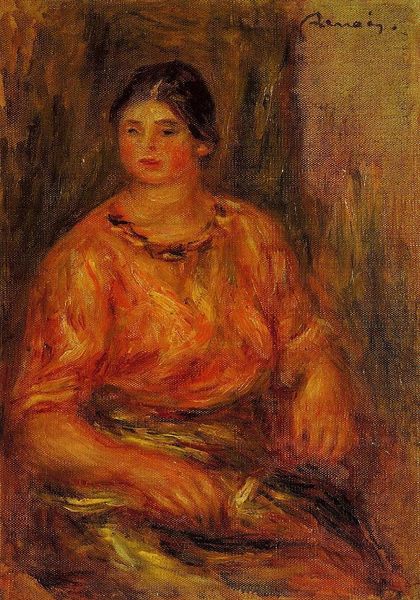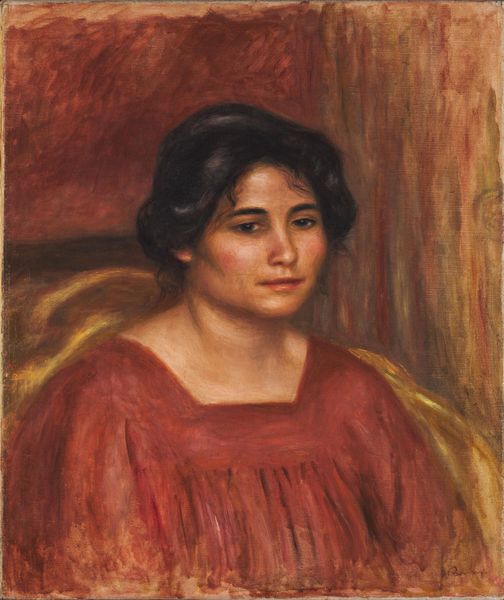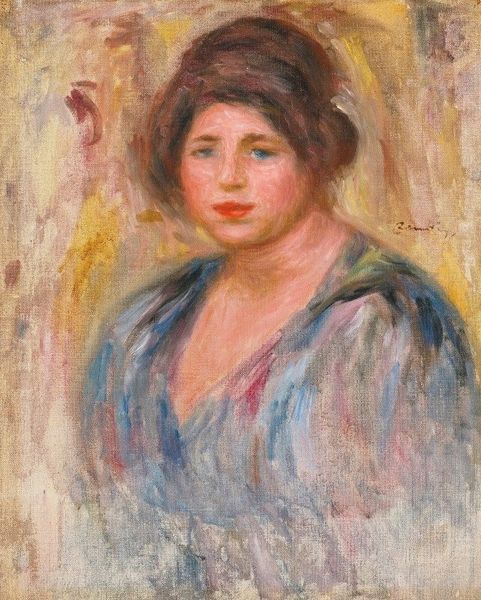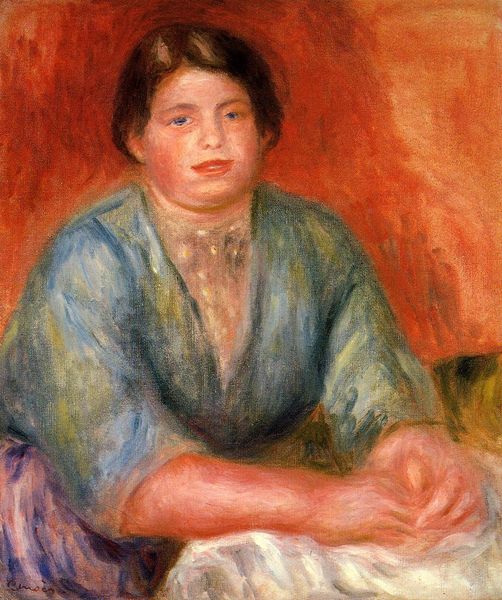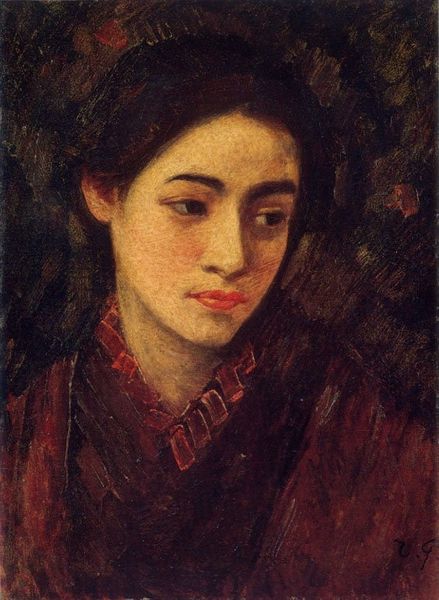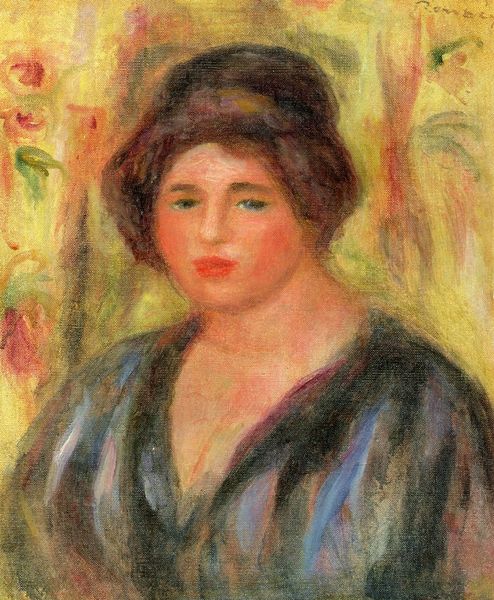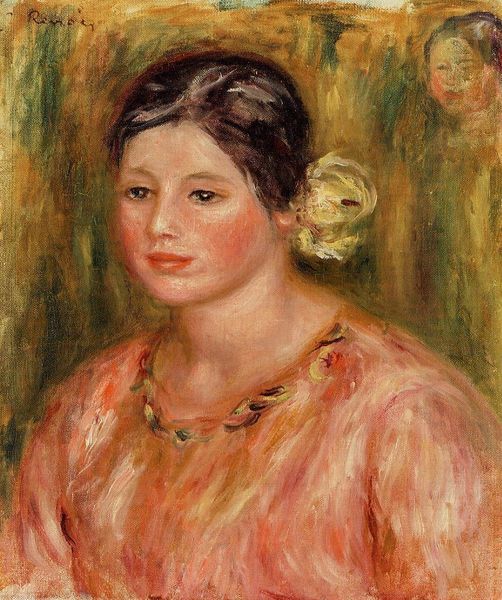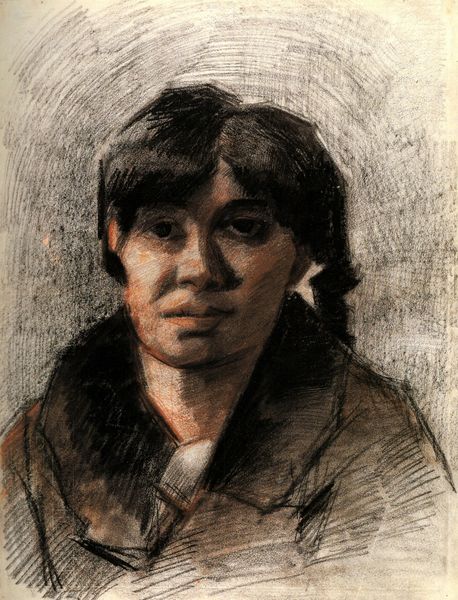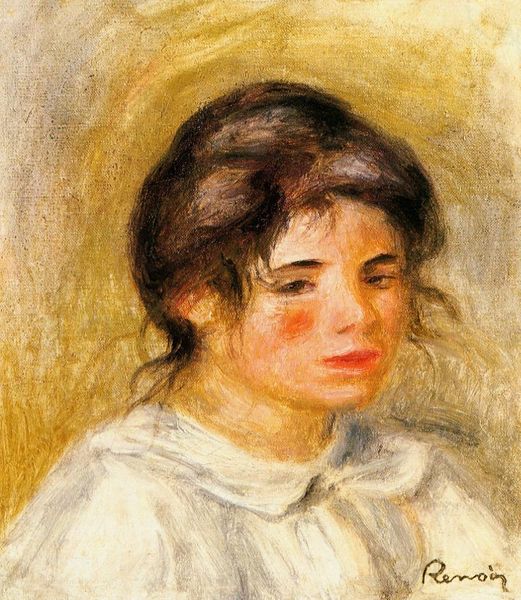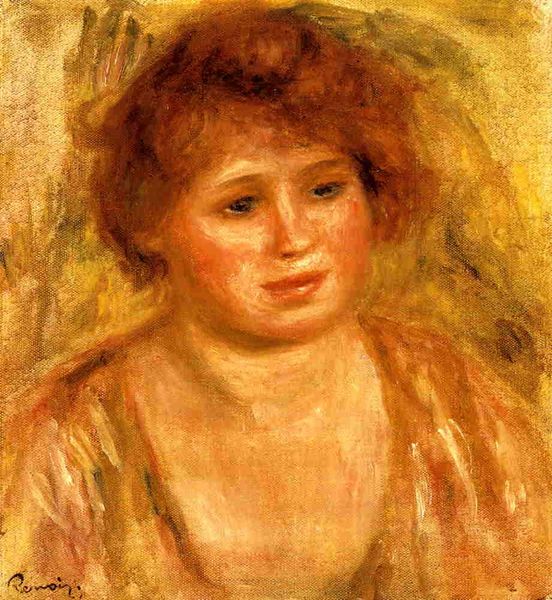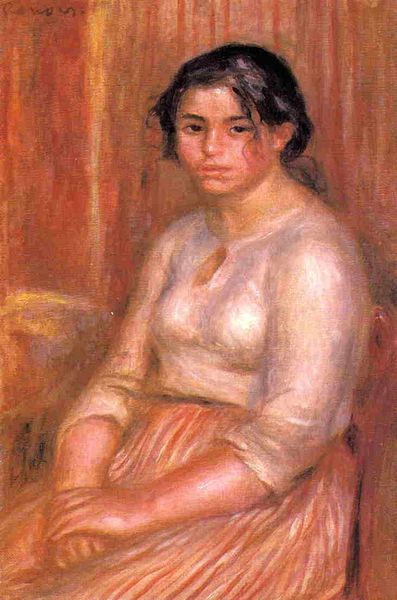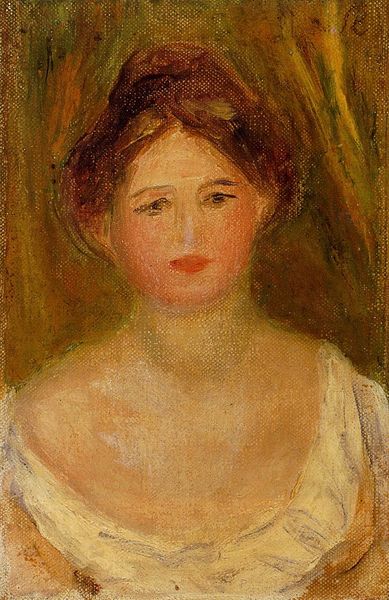
Copyright: Public domain
Curator: Looking at "Gabrielle in a Red Blouse" from 1913 by Renoir...it just feels so intimate. Her gaze meets yours, and there's this instant sense of connection, almost like she knows something you don't. Editor: My initial reaction is to see it as an artwork depicting a demure subject with very pale skin contrasted against the background; there is some clear attempt at realism through the artist's rendition of this woman with her short bob hairstyle. There is certainly an elegance to this portrait despite it belonging to an art movement with a history of anti-establishment ethos. Curator: Elegance is a great word. There's a simplicity to it, too. You know, Renoir wasn't about perfection. He celebrated the fleeting moments, the light, the colors...It’s almost like you catch a glimpse of Gabrielle in a rare, unposed moment. And oh, that blouse! A fiery splash of red. It’s not just a blouse; it’s a statement! Editor: Indeed! And situated within its historical context, Renoir painted Gabrielle Renard, who was also his son's nanny and a frequent model, right at the cusp of World War I. Consider how the subject matter is perceived when viewed through a critical, feminist lens. How did Gabrielle herself feel, being both a caretaker in the intimate domestic sphere of the Renoir household and being a repeated figure of representation in his artworks? Did she feel empowered by this act? Exploited? Commodified? What was the nature of their relationship? Curator: Wow, that throws the whole piece into a different light, doesn't it? It is an uncomfortable question when viewed within that lens. Looking at her face again, there’s a sense of calm. Did Renoir idealize her, perhaps? Make her into a muse, maybe shielding her from the social tensions of the time through art? It's hard to say... but that's where the beauty of art comes in! Editor: Precisely! These questions lead to further exploration, revealing the complexities beneath the seemingly straightforward surface of a portrait of a person. And as a work of art made during the transitional era into the dawn of modernity, we can understand that "Gabrielle in a Red Blouse" reflects both the old and the new. Curator: Exactly, you took the words right out of my mouth! A dialogue with history is a fantastic point. It also just highlights how art isn't a frozen moment, but really a continuous, ongoing conversation that we are invited into... Editor: Yes, exactly. Now when I see "Gabrielle in a Red Blouse", it's like hearing an invitation into that conversation—and more than just Renoir's artistic voice, also, implicitly, the voices of figures that history had casted a silent sentence upon, like that of Gabrielle.
Comments
No comments
Be the first to comment and join the conversation on the ultimate creative platform.
